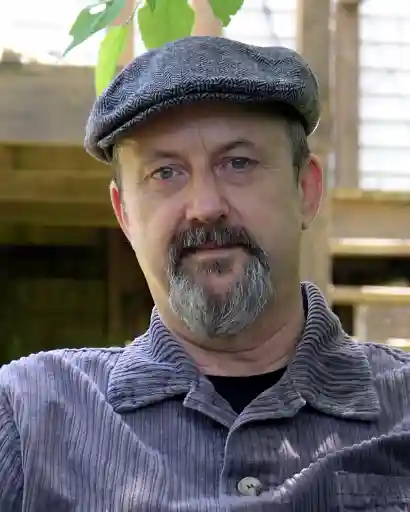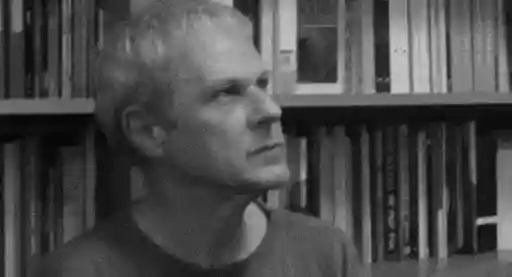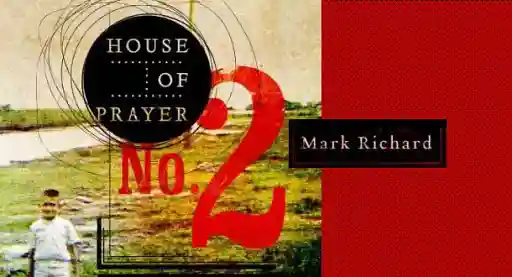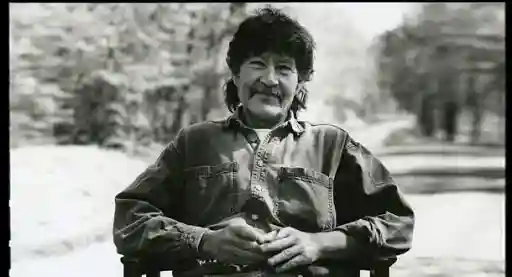There is crime fiction and then there is classic noir crime fiction, of which Terrence McCauley’s newest novel could be a poster child for. The Fairfax Incident hits shelves today, but if you didn’t know it, you might suspect the novel was actually written in the noir heydays of 1930s New Yok City, where the tale is set. I recently had a chance to catch up with New York native McCauley and toss a few questions his way.
You’re the author of several books, including the acclaimed James Hicks techno-thriller series and Slow Burn, a classic noir novel set in the 1930s. The Fairfax Incident shares a protagonist—NYPD detective turned private eye Charlie Doherty—with Slow Burn and two others, but also reveals the origins of the University, the secret intelligence agency of the Hicks’ thrillers. Can you explain further how The Fairfax Incident links these two worlds and narratives together?
When Sympathy for the Devil, the first James Hicks novel, came out, I was surprised by how many people were interested in the University’s backstory. I intentionally wrote it so that the reader would buy into the modern-day action of the tale, but their request got me thinking about whether or not I should write a novel that shows how the whole story began. The Fairfax Incident had already been written for several years by the time I even thought of writing Sympathy for the Devil. I knew I wanted Charlie Doherty to continue working as a P.I. and get involved in pre-war events here in America. When people began asking for backstory, I was able to easily adapt the Doherty timeline to the University timeline. It was seamless, actually, and made the book even more fun to rewrite. Whether I’m writing about the modern day or the 1930s, I always want the reader to be interested in the characters more than the plot. I feel that if the reader develops an affinity or a dislike for the protagonist, it will keep them engaged in the book. I hope Jason Pinter over at Polis Books will allow me to continue telling the modern day story of Hicks while continuing to detail the beginnings of the University from pre-war all the way through the Second World War, the Cold War and beyond. Obviously, the books won’t always involve Charlie, but I envision a gradual transition from Charlie to other characters who take the lead in a variety of situations.
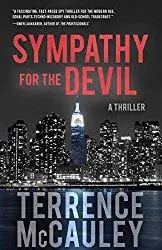 In The Fairfax Incident, Doherty’s world is immersive with spot-on details marking both the time period and the very particular city setting. What is your research process like? As The Fairfax Incident is your third book set in this time period, did you have to do much additional historical research or are you by now pretty comfortable writing in this time period?
In The Fairfax Incident, Doherty’s world is immersive with spot-on details marking both the time period and the very particular city setting. What is your research process like? As The Fairfax Incident is your third book set in this time period, did you have to do much additional historical research or are you by now pretty comfortable writing in this time period?
I’m very comfortable with writing in Charlie’s voice and with the time period, but that doesn’t mean I get complacent. Since historical fact is important in my books, I constantly do research to make sure I’m highlighting actual events in history. It’s not just for the sake of the reader. Such research gives me a lot of inspiration, too. In The Fairfax Incident, I detail a dark period in our nation’s history where Nazism was accepted in some quarters. It’s something we don’t talk about very often, but given today’s political climate, it seems to be more relevant than ever. I read quite a bit about the sickening American Bundist movement in America and was amazed to see how an organization many viewed as harmless turned into something far more political and subversive. I only cover the beginning of that movement in The Fairfax Incident and hope to continue that exploration further in future books.
Admittedly, I’m more familiar with your contemporary thrillers, where technology and international espionage play a large roll, and I was struck by how well you handled the classic noir genre. The Fairfax Incident steps back in time with such ease, both as regards the setting of the novel and the style in which it is written. This probably sounds clichéd, but in reading The Fairfax Incident, I could see it playing out in my head in black-and-white. What draws you to this style? And why do you think readers can’t get enough of it?
I think I’m more drawn to the era than the style. My Terry Quinn novels, Fight Card: Against the Ropes and Prohibition, are told in the third person from Quinn’s point of view. He’s an unsympathetic character on the surface, but readers liked him because they enjoyed reading about his plight wherein he has to use his brains and not his brawn to accomplish his goals. Even though the Charlie Doherty novels (The Devil Dogs of Belleau Wood, Slow Burn and now The Fairfax Incident) take place in the same universe and Charlie appears in both Quinn novels, I felt compelled to tell his story in the first person. I think it was because I wanted the reader to experience his journey as he experiences it.
I do my best to cut down on the clichés one has come to expect in the noir genre and focus more on Charlie as a character. Of course, there are familiar themes in any P.I. novel and The Fairfax Incident is no exception. Charlie is jaded and worldly, but he’s not the tough-talking gumshoe readers have come to expect. He’s not a big guy like Mike Hammer and he doesn’t spew wisecracks like Marlowe or Spade. He’s a cynic and doesn’t really have a particular moral code he follows like Archer or Spencer. I like writing about Charlie because the first person narrative allows me to show more of his character than the third person narrative might allow. I can show you how he’s feeling, not just tell you. I think that’s why the noir genre continues to be popular, even in today’s modern world of computers and cellphones and social media. People want to read stories that have characters with whom they can relate. As noir has been defined by bad things happening to flawed people, I think that popularity will continue.
As with most of your novels, The Fairfax Incident takes place in New York City and is thoroughly a ‘New York story.’ Especially in this latest work, the city itself is almost a character in the novel and I’m not sure the story would have the same flavor if it was set anywhere else. When you write, how important is the setting to the development of your story? Is it as integral to you as the author, as it becomes for the reader?
Setting is the extra character in all of my novels. As a reader, I know that if I can’t relate to the setting, it’s hard for me to understand motivations and plot elements. In my Hicks novels, all of the cities I describe contribute to the advancement of the plot. New York has played a role in all of those books, but so has London, Berlin and Toronto. Setting is a great way to demonstrate how the character reacts to different locations and how the story is affected by a change in scenery. I try to justify the changes by something that has happened in the plot. My characters aren’t in London just because I felt like writing about the city that day, they’re there for a specific reason. To accomplish a goal. By describing New York in the 1930s, I try to show the reader that much of what they may have seen in old movies is accurate, but seeing it on television and reading about it through Charlie’s eyes are two completely different things. Justifying the setting is one of the most rewarding aspects of my writing because it doesn’t just take the character or a reader to a different time. It takes me there, too.
I’ve mentioned NYC as your sort of story base of operations, but on top of everything else, you’ve also written science fiction and I’ve heard rumblings of a Western on the not-so-distant horizon. I’m assuming the stories in these genres don’t take place in the Big Apple. How do you juggle writing not only in so many different time periods, but also in the styles and tones of so many different genres?
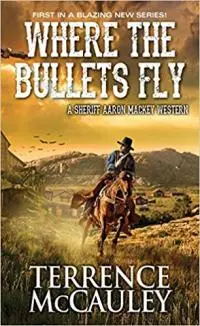 One of my literary heroes is Richard Matheson. He had written novels in every genre, except for romance, I believe. I marvel at how he could be so adept at writing so well in so many genres and I aspire to do the same. And if I can have a quarter of the success he had, I’ll be happy.
One of my literary heroes is Richard Matheson. He had written novels in every genre, except for romance, I believe. I marvel at how he could be so adept at writing so well in so many genres and I aspire to do the same. And if I can have a quarter of the success he had, I’ll be happy.
Becoming stale is my greatest fear. Writers are primarily entertainers who produce a product for an audience. That doesn’t mean one should necessarily alter the kind of story they feel compelled to write for the masses, but it should force a writer to find new ways to keep their talent as honed and fresh as possible. I view the James Hicks novels as the anchor of my creative endeavors. Everything else I write helps cleanse my creative palate in between books. I could easily jump from one Hicks book to another, but in doing so I risk becoming complacent. That’s why I try to change it up a bit. My science fiction novellas were a romp and great fun to write. The pulp short stories I wrote trained me to write in a certain style that was not necessarily my own, about a character I didn’t create. My noir novels allow me to tell a simpler story where I can’t rely on gadgets and computers to move the plot along, but on the human flaws of the characters and their responses to what happens to them. My Westerns have been surprisingly rewarding.
I’m a New York City guy through and through. I was born and raised in The Bronx, which is about as urban as it gets. I grew up thinking Canada was about five minutes north of Yonkers. I didn’t even ride a horse until I was in my thirties. I don’t really enjoy the outdoors as much as I can appreciate why so many people do. In writing my new Sheriff Aaron Mackey series (Where the Bullets Fly from Pinnacle in September 2018), the setting and time period may have changed, but the basics stay the same. I want the audience to be able to relate to the complicated, but stoic, Sheriff Mackey while they watch him face down one challenge after another. There are no showdowns at high noon or Native Americans on the warpath, but similar dangers and problems I hope the reader will find compelling. Writing Westerns has also allowed me to learn a whole other side of the industry and a completely different audience. I’m enjoying every minute of it and the people at Pinnacle have been great to work with.
The Fairfax Incident is, of course, the novel that’s currently going to be on everyone’s radar, but many readers will be coming to the book as fans of your previous work which, as we've discussed, takes many different forms. Is there a common thread running through all of your writing? Something that a reader of one genre or series would recognize if they picked up another? And how do you think this trademark manifests in The Fairfax Incident?
If I’m fortunate enough to have a trademark, I hope it’s that I tell compelling stories that keep the reader asking for more. I’ve chosen genres that allow me to tell the types of stories I enjoy reading. Interesting characters, believable plots and great action. Some early reviews of The Fairfax Incident have been from people who said they read it in one sitting and thoroughly enjoyed it. I’ve received similar compliments about my Hicks series. Many have said they can’t wait for the next Doherty or Hicks book to come out. I hope to have the opportunity to tell them more about both characters in the very near future. As I’ve always told the people kind enough to compliment my work: if you keep buying them, I’ll keep writing them. The Fairfax Incident is no different from my other work. Some have been concerned that the 1930s setting might mean a slower read. Far from it. I have managed to tell a classic story with a contemporary pacing, so fans of my modern stories should give the book a try. I think they’ll like what they read.

About the author
Steph Post is the author of six novels, including Lightwood, Miraculum and Terra Incognita. She graduated from Davidson College as a recipient of the Patricia Cornwell Scholarship and holds a Master’s degree in Graduate Liberal Studies from UNCW. Her work has most recently appeared in Garden & Gun, Saw Palm, and Stephen King’s Contemporary Classics. She has been nominated for a Pushcart Prize, a Rhysling Award and was a semi-finalist for The Big Moose Prize. She lives in Florida.

